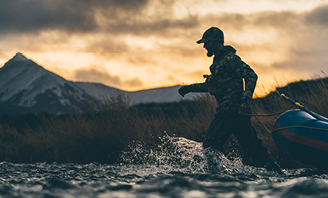As one of the lucky few who gets to hunt elk every year, I’m often asked, “How can I do that?” I usually answer with a couple questions of my own: “What does your budget and schedule allow?” And more importantly, “what type of bull are you looking for?”
Truth is, if money and time aren’t a worry for you, hunting elk in a bunch of states isn’t an issue. You can buy tags through guides or build years-worth of points while you wait to draw the perfect unit. But that’s not an investment everyone can make, which is why I’m going to focus on how you can hunt public land elk every year on just about any budget, the same way I like to hunt ‘em.
If you want to make sure you’re always in the game, you need to look for states that have good over-the-counter hunting options or leftover tags after the general draw. The three western locales you should focus on first are Colorado, Idaho, and Montana. Each one of these states provide out-of-state hunters with great opportunities to hunt elk almost every year. Better yet, they typically only require you to budget for a non-resident license, an elk tag, and travel/lodging costs. Let’s take a quick look at each state.



